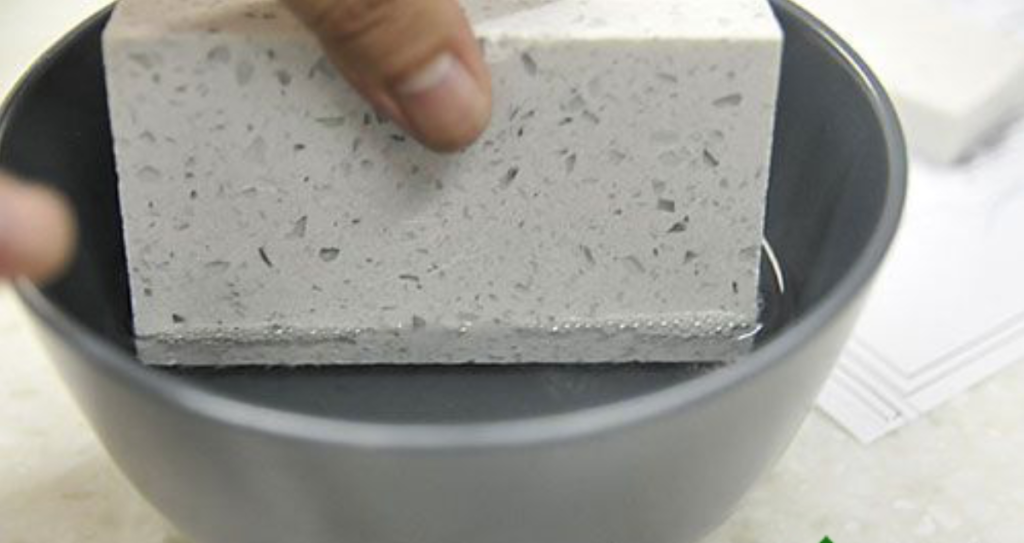How To Distinguish Whether a Quartz is Real or not ?
1 Watching through Observation
One can easily tell a genuine Quartz from a fake one by looking closely at the quality of the surface finish of the Quartz. The surface of a genuine Quartz is resistant to any form of pollution, and thus an easy way to test if it is real or not, is by drawing its surface using a marking pen and then trying to clean the surface. It is easy to clean a genuine Quartz because its surface is stain/pollution resistant. On the other hand, if it becomes hard to clean the surface, then that means the Quartz is not real and thus no need for buying it.

Another way to distinguish the real from the fake Quartz is by looking out for its logo at the back of the Quartz, since all quartz products produced in a legitimate factory, have a logo engraved on the back of the quartz.
2 Scratch
The second way to distinguish a genuine Quartz is through subjecting it to the ‘Hardness Test.’ The most common way to conduct this test is using a steel knife to scratch the surface of the Quartz. Since the genuine quartz is made of 94% quartz and 6% resin, it has a 7-degree hardness. This surface is harder to scratch and more scratch resistant in comparison to the surface of the fake quartz. That is because the surface of the fake quartz is mixed with marble powder and resin, which weakens it to a 4-6 degree hardness.
If the surface is scratched and leaves a white trace line, then the quartz is not genuine because its hardness is low and the inside of the Quartz surface is exposed. On the other hand, the real quartz will leave a black trace line when scratched, only because of friction and not because the steel knife could not cut the surface.

3 Burn
The quartz has high-temperature resistance and any pressure below 300 degrees can have no impact on it. In other words, unlike a genuine Quartz which does not break or deform when it is subjected heat that is below 300 a fake quartz is most likely to burn, melt-down or deform since it is made of resin. One can undertake this simple test or procedure by using a lighter to burn the quartz.

4 Acid
Another test is dropping a spoon of white vinegar to the stone surface and waiting for about 30 seconds. In the event that many minute bubbles form on the surface, that will mean that the quartz is not real because the fake quartz has Calcium carbonate, which reacts chemically with white vinegar to produce a lot of bubbles. While the price for this kind of stone is lower than that of the real quartz, this stone also ages faster, cracks easily, absorbs dye and essentially has a relatively short lifespan.

